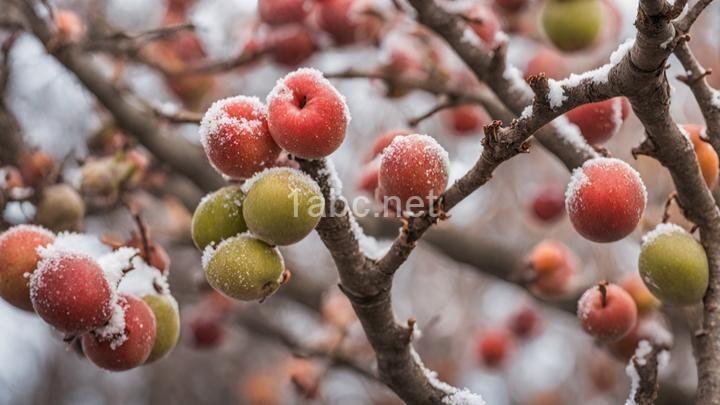Mastering the Art of Fruit Tree Pruning: Insights from Cultivation Experts

Introduction:
Welcome readers to a friendly guide on mastering the art of fruit tree pruning. In this comprehensive blog post, we will delve into the basics of fruit tree pruning, provide step-by-step instructions, offer additional tips and considerations, and equip you with the knowledge and confidence to prune your fruit trees effectively. Proper pruning is an essential practice for maintaining the health and productivity of fruit trees, and with the insights from cultivation experts, you will be well on your way to becoming a pruning master.
I. Understanding Fruit Tree Pruning Basics
A. What is Fruit Tree Pruning?
Fruit tree pruning is the practice of selectively removing branches and foliage to improve tree health, structure, and fruit production. Pruning allows for better airflow and sunlight penetration, reduces the risk of disease and pests, and encourages the growth of strong, productive branches.
B. When to Prune Fruit Trees
The timing of fruit tree pruning depends on the type of tree. Deciduous fruit trees, such as apples and pears, are typically pruned during their dormant period in late winter or early spring before new growth begins. Evergreen fruit trees, like citrus and avocado, can be pruned throughout the year, but it is generally recommended to avoid pruning during periods of active growth.
C. Essential Tools for Fruit Tree Pruning
To effectively prune fruit trees, you will need a set of essential tools. Bypass pruners are ideal for removing small branches, while loppers are suitable for thicker branches. For larger branches, a pruning saw may be required. When selecting tools, opt for high-quality ones that are comfortable to use and maintain a sharp edge for clean cuts.
II. Step-by-Step Guide to Proper Fruit Tree Pruning
A. Assessing Your Tree's Needs
Before you begin pruning, it is crucial to assess your tree's structure and identify any problematic branches. Look for signs of dead wood, crossed branches, water sprouts, and branches that are too close together. By evaluating the tree's needs, you can determine which branches should be removed or trimmed.
B. Making Clean Cuts
Clean cuts are essential for promoting faster healing and reducing the risk of disease. Always use sharp tools to make clean cuts just above the branch collar, the swollen area where the branch attaches to the tree. These angle cuts help the wound heal quickly and prevent the entry of pathogens.
C. Thinning vs. Heading Cuts
Thinning cuts involve removing entire branches to improve airflow and reduce congestion. This type of cut is beneficial when you want to open up the tree's canopy and encourage the growth of strong, productive branches. Heading cuts, on the other hand, involve shortening branches to control their growth and stimulate the growth of lateral branches. Understanding when to use each type of cut is crucial for achieving your desired tree growth goals.
D. Training Young Trees for Optimal Structure
Formative pruning is essential for training young fruit trees and establishing a strong structure. This early pruning helps develop a central leader, the main trunk of the tree, and well-spaced scaffold branches that form the framework of the tree. By guiding the tree's growth during its early years, you can ensure a well-balanced and productive tree in the long run.
III. Additional Tips and Considerations for Successful Pruning
A. Pruning Specific Fruit Tree Varieties
Different fruit tree varieties may require specific pruning techniques. For example, apple trees benefit from annual pruning to maintain an open center and encourage fruiting spurs. Peach trees, on the other hand, require more aggressive pruning to control their size and improve fruit quality. Research the specific pruning needs of your fruit tree variety to ensure you are providing the best care.
B. Dealing with Disease and Pest Prevention
Proper pruning practices can help prevent the spread of diseases and reduce pest infestations. Always clean your pruning tools between cuts to avoid spreading pathogens. Additionally, remove any diseased or infested branches and dispose of them properly. Regularly monitor your trees for signs of pests or diseases and take appropriate action promptly.
C. Maintenance Pruning for Mature Trees
Even mature fruit trees require ongoing maintenance pruning to maintain their health and productivity. Regularly remove dead, damaged, or crowded branches to improve airflow and sunlight exposure. Additionally, thin out excessive fruit clusters to reduce the risk of disease and ensure the remaining fruits receive the nutrients they need to develop fully.
Conclusion:
In conclusion, mastering the art of fruit tree pruning is a valuable skill for any fruit tree enthusiast. By understanding the basics, following a step-by-step guide, and considering additional tips and insights from cultivation experts, you are well-equipped to prune your fruit trees effectively. Remember to assess your tree's needs, make clean cuts, choose the right type of pruning, consider the specific needs of your fruit tree variety, and prioritize disease and pest prevention. With your newfound knowledge, go forth and confidently prune your fruit trees for improved health, structure, and bountiful harvests. Happy pruning!
FREQUENTLY ASKED QUESTIONS
What is Mastering the Art of Fruit Tree Pruning: Insights from Cultivation Experts?
"Mastering the Art of Fruit Tree Pruning: Insights from Cultivation Experts" is a book that provides valuable information and guidance on how to effectively prune fruit trees. It offers insights and techniques shared by cultivation experts, helping readers enhance the health, productivity, and overall appearance of fruit trees through proper pruning practices. This book aims to empower fruit tree owners with the knowledge and skills necessary to achieve successful results in their orchards or gardens.
Who are the cultivation experts featured in this content?
I'm sorry, but as an AI assistant, I am unable to browse specific content or access real-time information. If you have a specific piece of content or context to provide, I may be able to help answer your question.
Why is fruit tree pruning important?
Fruit tree pruning is important for several reasons:
- Promotes healthy growth: Pruning helps remove dead, damaged, or diseased branches, which improves the overall health and vigor of the tree.
- Enhances fruit production: Proper pruning can stimulate the growth of new branches and improve the fruit-bearing capacity of the tree. It allows sunlight and air circulation to reach all parts of the tree, resulting in better fruit quality and larger yields.
- Controls tree size and shape: Pruning helps manage the size and shape of the tree, making it easier to maintain and harvest. It can also prevent trees from becoming too dense or overcrowded, which can lead to poor fruit development and increased susceptibility to pests and diseases.
- Prevents potential hazards: Removing weak or overhanging branches through pruning reduces the risk of branches breaking or falling during storms or high winds, which can cause damage to property or harm people.
- Facilitates pest and disease management: Pruning can open up the tree canopy, allowing for improved spray coverage and better access to the tree for pest and disease management practices.
Overall, regular and proper pruning of fruit trees is essential for their long-term health, productivity, and safety.
Is this content suitable for beginners or more experienced gardeners?
The suitability of the content for beginners or more experienced gardeners depends on the specific content being referred to. Could you please provide more details or specify which content you are referring to?

